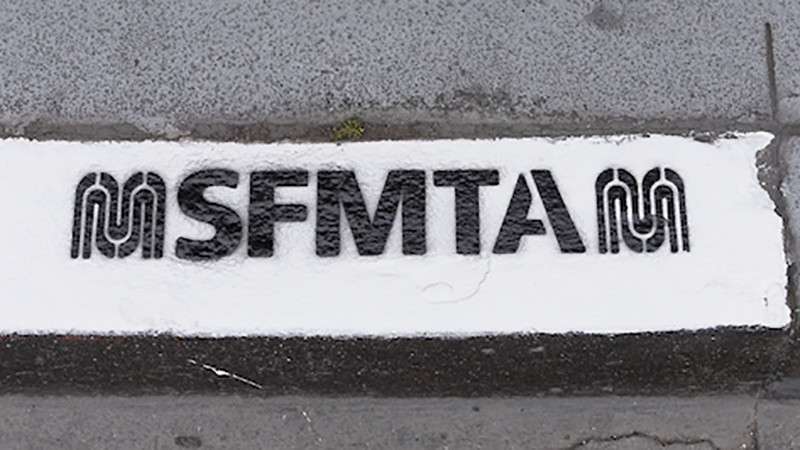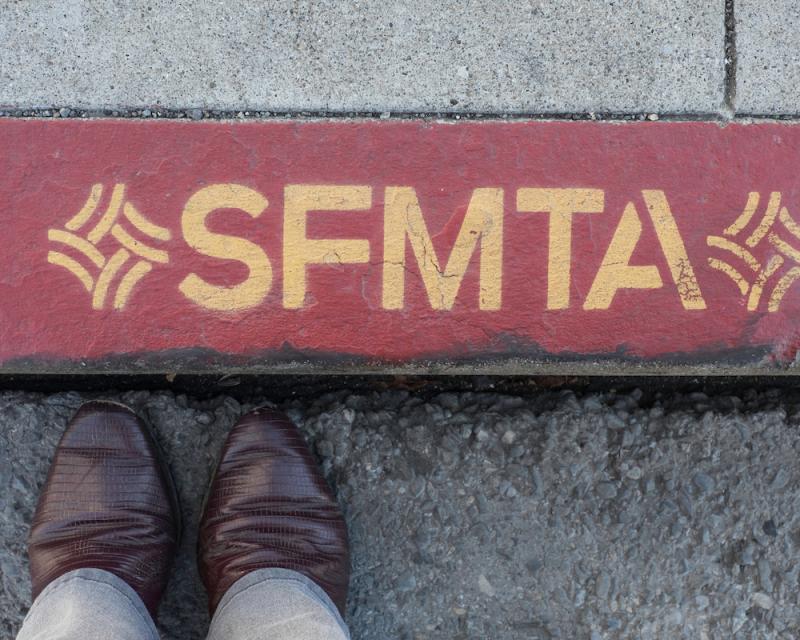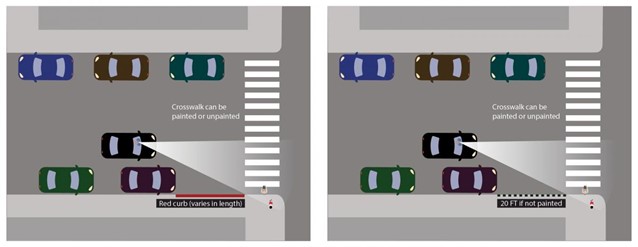I'm still a bit unclear on the timeline as I heard it went into effect at the beginning of the year, but some cities are still evaluating how to proceed. The gist is pretty simple - that absent specific cases where it's allowed by a city or county, vehicles can't be parked within 20 feet of an intersection in order to provide a better view for vehicles looking to enter an intersection. It's reduced to 15 feet if there's a specific curb extension (aka "bulb out") that extends the corner beyond the curb. Like this:

I kind of get it. I have issues going into intersections when there are parked cars, especially if it's a higher vehicle with tinted windows like SUVs, pickups, vans, or commercial vehicles. I just can't see past them. Granted I know of some intersections where there are tall privacy hedges in corners that make it near impossible to see side traffic when waiting behind the crosswalk or stop line.
However, I haven't seen any case yet where this has been enforced. It theoretically doesn't matter if there's an existing parking meter, marked parking space, and/or existing curb marking. I've been avoiding parking at corners just in case. However, there have apparently been some people who took the law into their own hands and painted curbs red, including attempts to copy official city/county markings like the ones used in San Francisco. For example, San Francisco has a specific marking for all red/yellow/white/green curbs. I think the older version used the San Francisco Muni logo, but the current ones have a different logo.



Starting January 1, 2025, the City of Livermore will be blocking striped parking spaces that are in violation of AB 413 with temporary no parking signs, primarily in the downtown area. These signs will be removed after the striped curb extensions are installed and/or the parking spaces are permanently removed, which is tentatively scheduled to be completed by the end of January 2025. Starting late January / early February 2025, red curbs will be painted near marked or unmarked crosswalks at over 200 locations, close to public schools.
Whether or not the curb is painted red, drivers could be cited for violating this law beginning January 1, 2025.
I kind of get it. I have issues going into intersections when there are parked cars, especially if it's a higher vehicle with tinted windows like SUVs, pickups, vans, or commercial vehicles. I just can't see past them. Granted I know of some intersections where there are tall privacy hedges in corners that make it near impossible to see side traffic when waiting behind the crosswalk or stop line.
However, I haven't seen any case yet where this has been enforced. It theoretically doesn't matter if there's an existing parking meter, marked parking space, and/or existing curb marking. I've been avoiding parking at corners just in case. However, there have apparently been some people who took the law into their own hands and painted curbs red, including attempts to copy official city/county markings like the ones used in San Francisco. For example, San Francisco has a specific marking for all red/yellow/white/green curbs. I think the older version used the San Francisco Muni logo, but the current ones have a different logo.


The paint jobs seemed tailored to resemble those required by California’s new daylighting law – which aims to create a 20-foot buffer between every crosswalk and the nearest parked car – except that several of the unsanctioned red strips exceeded the mandatory length. While the law aims to protect pedestrians by reducing blind spots for motorists, it’s rankled residents of San Francisco, and other cities, who risk getting ticketed if they park in the buffers, whether or not they are marked.

